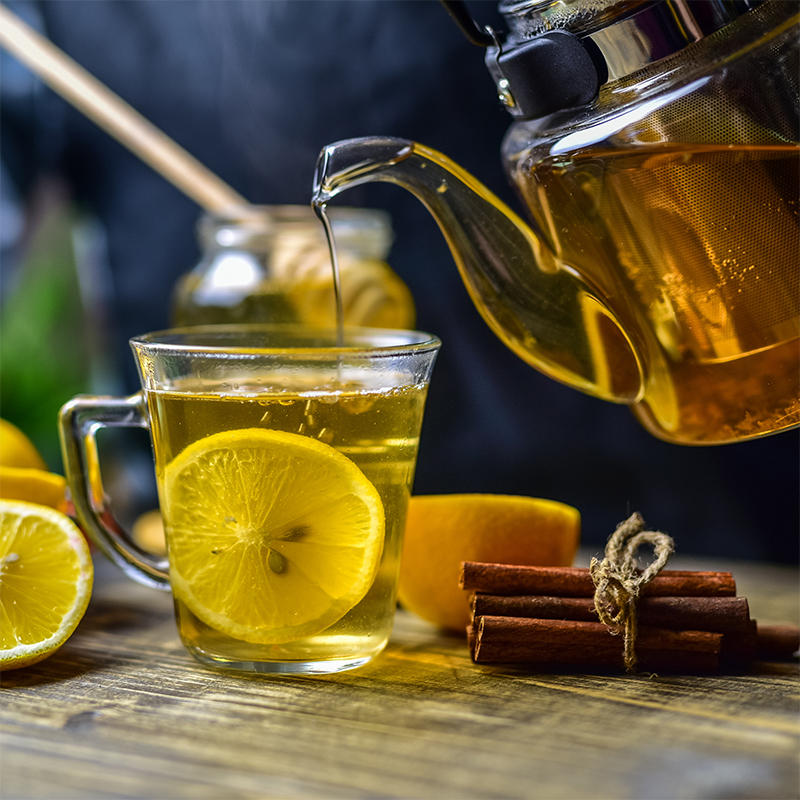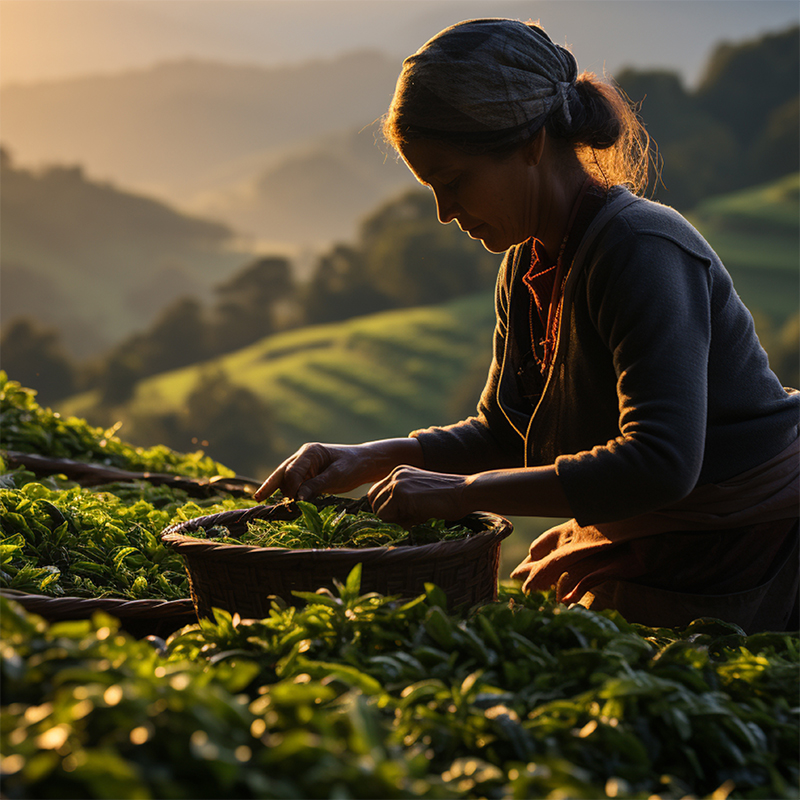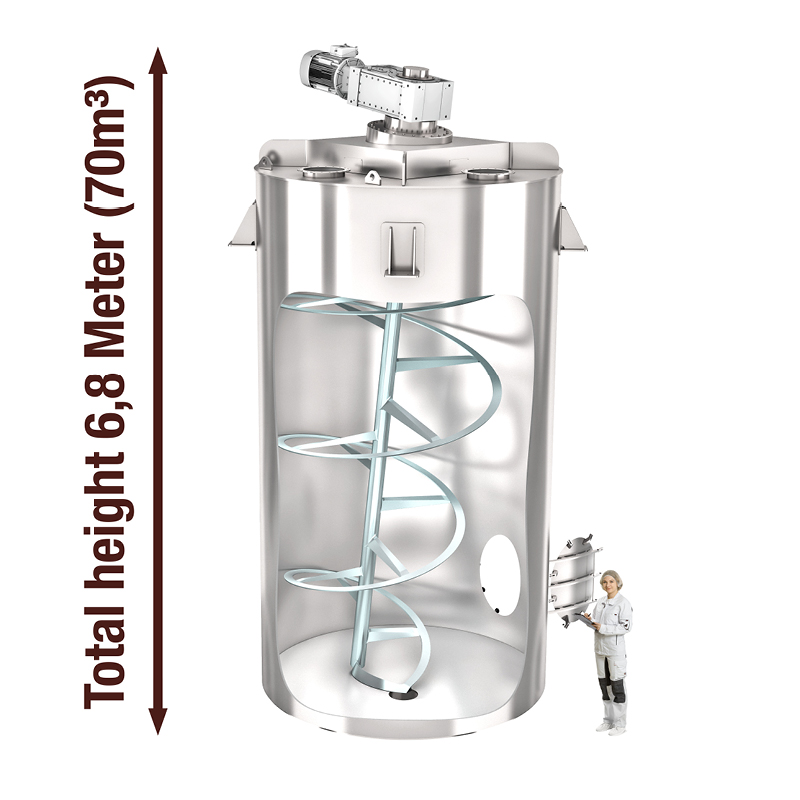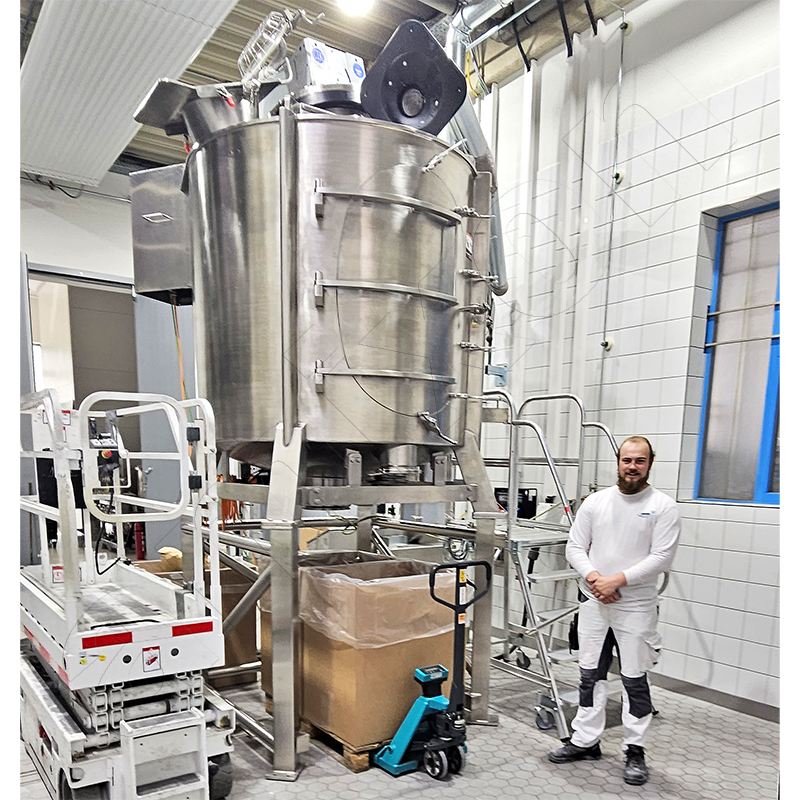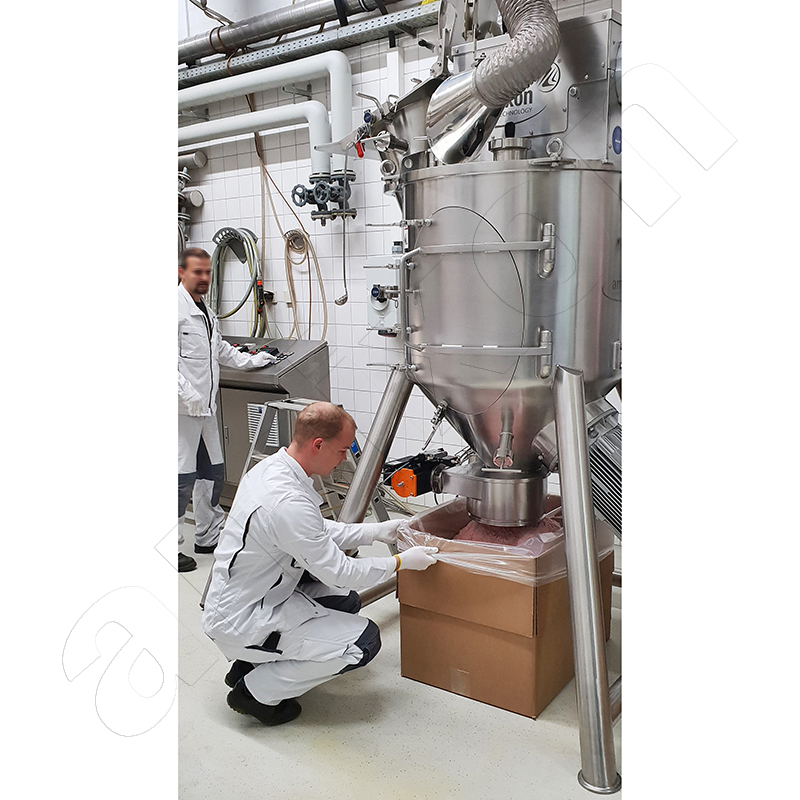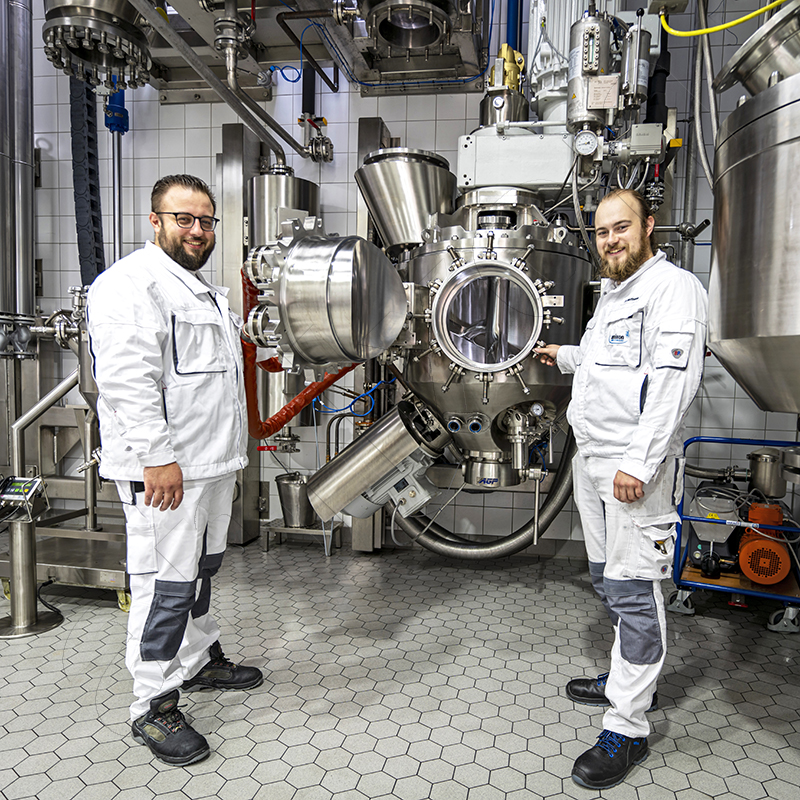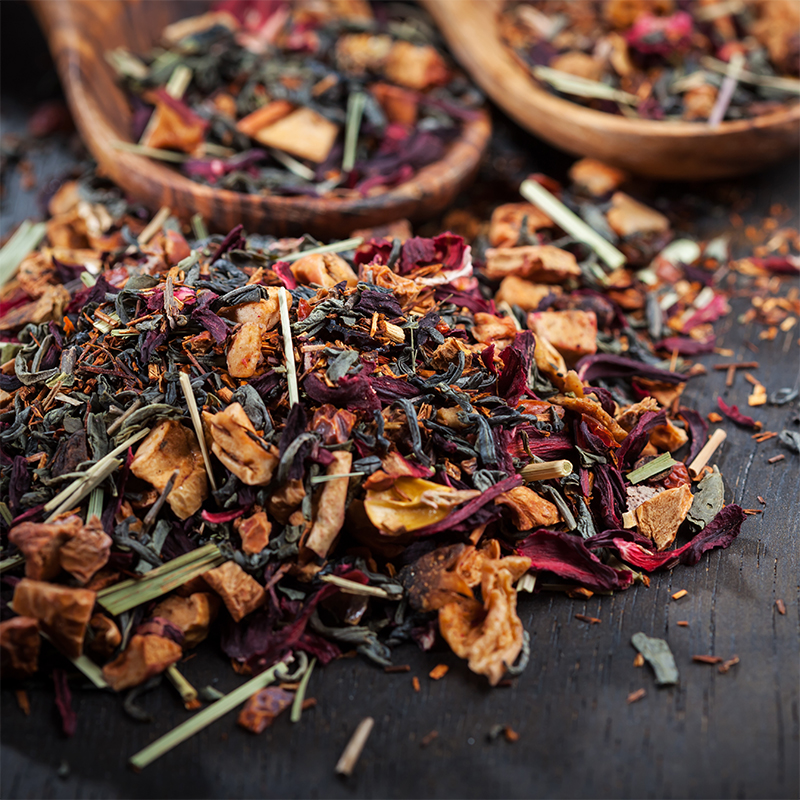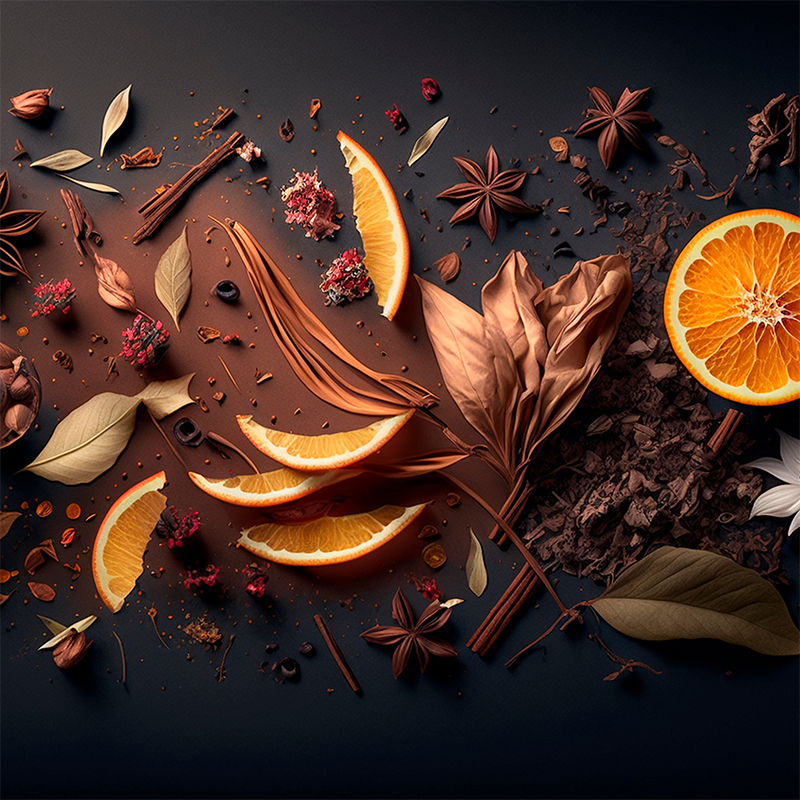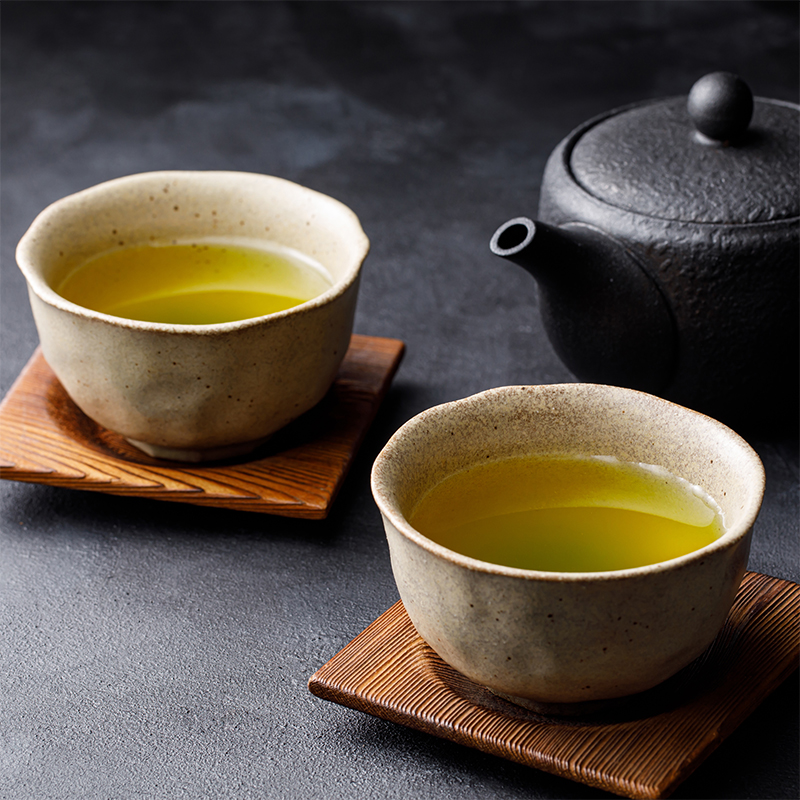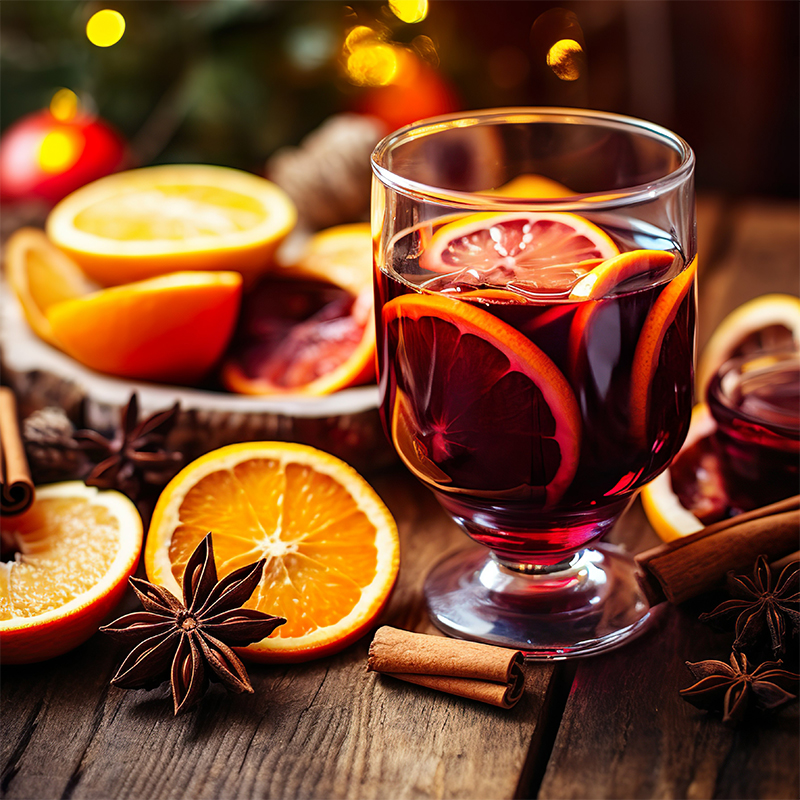Blender for organic tea and fruit tea
A successful tea producer and trader answers questions about tea qualities. This interview complements the existing amixon® blog entry on tea and fruit infusions. The interview was conducted by Melanie Deschler-Reining, Head of Marketing at amixon GmbH.
What characteristics should a blender have for the production of high-quality tea and fruit blends?
Depending on the time of harvest, origin and variety, the tea leaves vary in size and weight. The same applies to the fruit used. The mixer must be able to mix these heterogeneous compositions ideally and precisely.
- In a short time
- with low mixing tool speed
- with maximum gentleness, so that the leaves are not shredded
The addition of powdered or liquid aroma to tea is very important. The mixer must mix in all types of flavors quickly and accurately. The flavors must adhere firmly to the tea and fruit particles after blending.
It is particularly important that the mixer can be used universally. It should mix small batches of 60 or 100 liters. However, the same mixer must also be able to mix batches of 1000 liters. Always gentle, always fast, always precise.
It is equally important that the mixer empties the batches 100% so that no residues are left behind.
The blender must be ergonomically designed. This applies to filling, emptying, inspection and cleaning.
We achieve high efficiency with an amixon® mixer: This allows us to process different orders one after the other, always in top quality and always strictly hygienic.
Digression: When it comes to homogenizing the contents of sea containers ....
Tea is not just a precious specialty. Tea is also a mass product for discounters who are interested in delivering consistent quality over long periods of time. Even if a tea importer monitors his tea producers on site, he will still find different qualities of tea in the deep-sea container because tea is a natural product. The harvest time, the weather on the day of harvest, the time of day of harvest, the location of the field, the age of the plant, ... many factors cannot be controlled.
It is not trivial to homogenize a batch of, for example, 70 m³ (which corresponds to the contents of a 40-foot container).
For this purpose, amixon® has developed the Gyraton® mixer.
The interesting mixing machine
- is inexpensive,
- mixes extremely gently
- can blend batches of different sizes (from 3 m³ to 70 m³)
- is space-saving
- can be transported fully assembled on the road
- has a particularly hygienic design
- requires only a very small drive motor
- produces technically ideal mixing qualities that can no further be improved in practice.
Testing in the amixon® technical center
Tests in the amixon® technical center are always informative. amixon® has more than 30 different test mixers available on site. In addition to the mixing process, we can also sterilize spices, tea and herbs with sterile steam. In this case, a vacuum is applied. Drying is quick and gentle.
The Gyraton® mixer is also available as a test apparatus with a usable volume of 4000 liters. Test results can be extrapolated to large appliances. This provides a reliable basis for an investment decision.
Because if the mixing operation has a high added value, the selection of the mixer is of great importance. This idea is reinforced considering the long service life of an amixon® mixer, which is usually thirty years or more.
In your opinion, are there any specific aspects to blending different types of tea?
The art lies in the balance of the components. The aromas of the different teas, herbs and fruits interact with each other. Only when the right flavors are involved will the taste be improved. It is equally important that the particle sizes match so that no undesirable segregation occurs. If the mixture also has a beautiful play of colors, it is perfect.
What is the difference between organic tea and "standard" tea?
The EU Organic Regulation obliges producers, distributors and retailers to ensure complete traceability. Certified inspection bodies are active worldwide and carry out inspections in the cultivation area. The checks are repeated annually. They are documented in the international register for organic goods.
In your opinion, are there any specific aspects regarding the flavoring of different types of tea?
Flavored tea blends account for a large proportion of sales today. Bergamot, lemon and orange are often used to stabilize the aroma. However, if foreign natural substances are used, the tea may no longer be labeled as "organic". The customer can hardly tell whether a natural or nature-identical flavor has been added. We do not use the latter for quality reasons.
Is the flavoring sprayed onto the tea/fruit tea in liquid form? Or is the tea/fruit tea also refined with powdered flavoring?
Both are common today. I have also developed textures that only require the scent of added spices.
Do you also differentiate between so-called fruit teas and "genuine" tea?
Unfortunately, the difference is lost in German usage. But a distinction must be made:
- Genuine tea refers to tea leaves of the Sinensis and Japonica varieties, both of which contain 2-3% of the long-lasting invigorating caffeine. Boiling water is poured over this type of tea blend. The infusion time is 3 to 5 minutes.
- Fruit tea, pure or mixed with pieces of apple, mango, passion fruit, strawberries, raspberries or blackberries, for example, requires at least 10 to 20 minutes infusion time. Only then can fruit acids, anthocyanins and secondary plant substances dissolve and develop their aroma.
Does your company also deal with so-called "cold brew"?
Cold brew is a preparation process in which fruit, herbal or caffeinated green and black teas are steeped in cold water for several hours. For hygienic reasons, I always recommend using boiling water. This is the only way to drink a safe beverage that is free from possible germs and viruses. If you want to refresh yourself, tea is best drunk "body-warm". Too hot or too cold does not help.
When you look back over the last two decades, what changes have you seen?
When it comes to taste preferences:
After many years in which the black tea segment took the lead, the mostly flavored herbal and fruit teas are now catching up strongly.
Concerning the producers:
Producers are adapting to consumer tastes and have launched interesting herbal and fruit teas on the market in recent years. New regulations and statutory provisions are having a positive impact.
With regard to the depth of information on production, origin, hygiene, plant protection and ethical production conditions (fair payment, ban on child labor):
The product claims on the packaging now provide more serious information. We owe this to regulations such as the "Health Claims", the "Food Labeling Ordinance" and the "Therapeutic Products Advertising Act".
This seems to me to be an appropriate conclusion. Thank you for sharing these interesting thoughts. It was very enlightening to listen to you. We wish you continued success in the trade with tea and tea blends.
© Copyright by amixon GmbH

